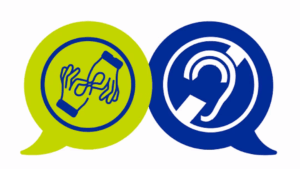There is an increasing issue in the United States: a lack of medical interpretors. According to the US Census Bureau, around 25 million Americans have limited English proficiency. The groups most affected by the lack of medical interpretation are immigrants, refugees, and migrant workers.

Non-English speakers or those with limited English proficiency sometimes avoid seeking medical treatment. They fear not being able to communicate with their healthcare provider. Those brave enough to seek out treatment usually do not understand the language. Therefore, they may not be able to make informed decisions about their own healthcare and treatment options.
The healthcare professional may also be unable to clearly understand what the patient is trying to convey. Even if a patient brings a family member or friend who speaks both languages, a professional medical interpreter is the best option. Access to a professional medical interpreter leads to higher patient satisfaction and better treatment outcomes.
The ability to fully and precisely communicate is key
A professional medical interpretation primary role is to facilitate communication between individuals who speak different languages. They are also responsible for providing nuance to cross the cultural gap in addition to the language gap. There are many situations that call for a skilled interpreter.
When a professional interpreter is not in the room, there is a high risk of relaying incorrect or incomplete information to the patient. This situation might gravely impact the health and well-being of the patient with limited English proficiency. Patients and healthcare providers rely on professional medical interpretation to communicate critical information about diagnostics and treatment options. Patients attempting to receive medical care from healthcare providers that they cannot understand can risk misdiagnosis, mistreatment, and irreversible damage.
Some unfortunate cases
In one case, a farm worker in California suffered a heart attack and rushed to the hospital. The patient only spoke Triqui, a language indigenous to Mexico, and she was not provided an interpreter. This was in violation of the Title VI mandate that provides medical interpretation at no cost to any patient that needs them. She had to receive medical treatment without full understanding of her condition or the course of treatment. She unknowingly underwent surgery and had a pacemaker implanted in her chest.
Another incident occurred in Annapolis in 2012, when a Spanish-speaking man was in treatment for two days for fluid buildup in his abdomen and lungs. A hospital report revealed that no one discussed his care plan with him in a language he could understand. The patient died during treatment without a full understanding of what was going on. These are just a few of many incidents caused by this problem and these stories also highlight a dire need for trained medical interpreters.
Why does still happen?
The Law mandates that healthcare facilities provide professional medical interpretation to patients with limited English proficiency. Still, why did these incidents happen? Why do similar incidents continue to happen around the country all the time?
One of the main reasons is that there are just not enough medical interpretation to go around. Being bilingual is not enough to become a medical interpreter – the aspiring interpreter must know both languages to a high degree of fluency and be able to interpret nuances and cultural cues. They must have specialized training, familiarize themselves with medical terminology, and obtain a certification. Furthermore, there are patients with limited English proficiency who speak uncommon languages, such as in the first story above. There might not be any interpreters in the area for patients who need them. One solution to this issue is access to Over-the-Phone medical interpreting. However, the number of trained interpreters in the United States is still too small in comparison to the number of patients with limited English proficiency who need their services.
Resources at hand
There are a number of training and certification programs for healthcare interpreters, to obtain and continue to build upon the specialized skills needed for the position.
The Cross Cultural Healthcare Program established a nationally recognized program: the Bridging the Gap Medical Interpreter Training Program.
Bridging the Gap is a 40-hour course. It teaches interpreters the role of the interpreter, ethics, medical terminology, the influence of culture, and an overview of the U.S. healthcare system. After participants complete the program they receive a certificate of completion. The Bridging the Gap certificate is a valuable and well-respected qualification for healthcare interpretation facilities, Healthcare organizations such as the Joint Commission and interpreting agencies like Global Arena.
Become a medically trained interpreter
Global Arena also offers the Bridging the Gap training program and has many sessions scheduled in 2020. Learn more about the BtG 2020 schedule and fill out our registration form at the end of the Bridging the Gap Training Program page.




